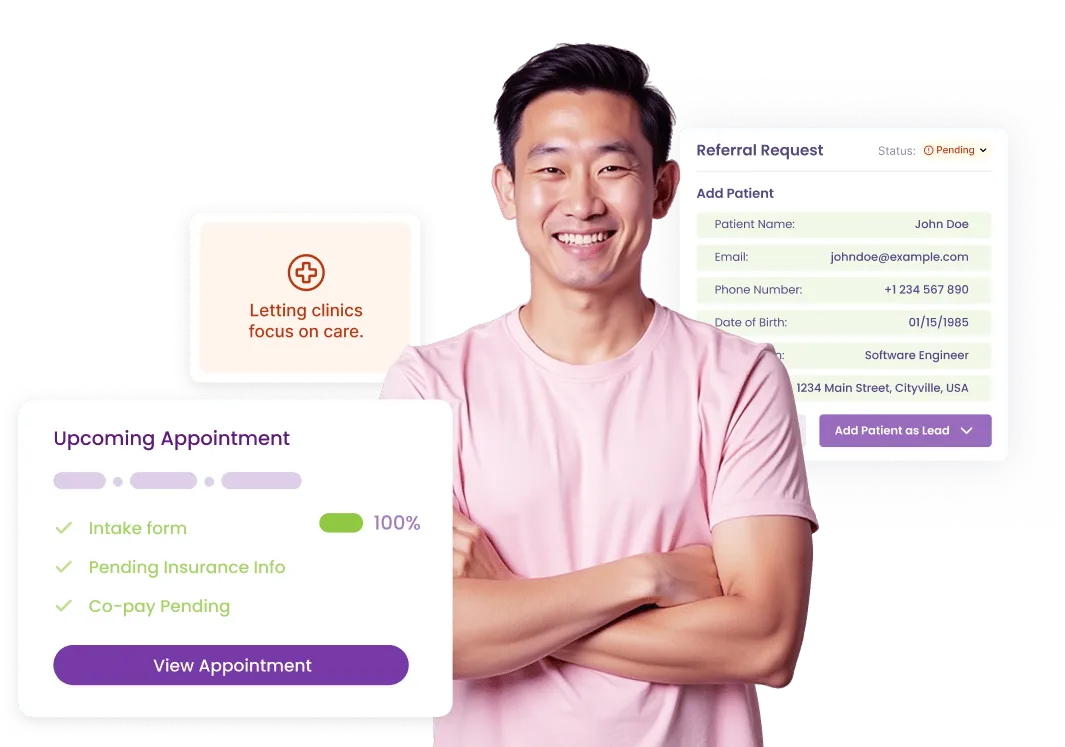96156 – Behavioral Health Assessment / Diagnostic Service
CPT code 96156 represents a distinct mental or behavioral health service, including evaluation, therapy, or care coordination.
What is CPT
96156
?
96156 is a CPT code used primarily for the assessment and evaluation of patients through diagnostic testing. This entry provides an overview of the clinical purpose of the code, essential documentation requirements, and considerations for billing with various payers. It is critical for healthcare providers to ensure that clinical notes are aligned with evidence-based practices, thoroughly documenting treatment goals, interventions utilized, and patient progress in measurable terms. For assessments billed based on time, providers must accurately record start and stop times to substantiate the duration billed, thereby ensuring compliance and reducing the risk of claim denials.

Documentation Tips
When billing for services under 96156, it is essential to document the start and stop times if the service is time-based. Providers should include specific information about the therapeutic modality or assessment instrument employed, the clinical focus during the session, the patient’s response to the assessment, and a clearly defined follow-up plan. In instances where scored instruments are utilized, maintain copies of all completed assessment tools for record-keeping and verification purposes. If services are provided via telehealth, ensure proper documentation of patient consent and the details of the platform used for the session. Employing consistent documentation frameworks such as SOAP (Subjective, Objective, Assessment, Plan) or DAP (Data, Assessment, Plan) can enhance readiness for audits and ensure compliance with payer requirements.

At a Glance
- Service Type: Assessment
- Use Case: Diagnostic / Testing
- Typical Setting: Outpatient clinic or telehealth (subject to payer policy)
- Billing Unit: Per session or per instrument (varies based on specific code)
- Common Pairings: 90791, 96127, various psychotherapy codes
Billing Examples
For instance, a clinician may administer the Patient Health Questionnaire-9 (PHQ-9) to assess a patient's depressive symptoms, scoring the instrument after administration and subsequently filing and billing for the service under 96156. In another scenario, standardized neuropsychological assessments that follow structured administration, scoring, and interpretation protocols would justify the use of this code. Another example includes utilizing the Generalized Anxiety Disorder 7-item scale (GAD-7) to evaluate anxiety levels, where clinicians must ensure that the evaluation aligns with the documented clinical goals and interventions.
Compliance Guidelines
- Confirm payer coverage and authorization requirements prior to billing for services using 96156.
- Clearly document medical necessity and ensure all services are linked to the appropriate ICD-10 diagnosis codes.
- Utilize the correct modifiers, such as 95 for telehealth services, as required by the payer.
- Avoid upcoding; select the code that accurately reflects the documented time and level of service provided.
- Conduct periodic audits of billing practices to reduce the likelihood of claim denials and enhance the quality of documentation.
Common ICD-10 Codes
Helpful links for mental health billing and documentation
- F32.9
- F41.1
- R45.0
- Z13.89
- F90.0
Additional Resources
Helpful links for mental health billing and documentation
Related CPT Codes
Helpful links for mental health billing and documentation
Got questions? We’ve got answers.
Need more help? Reach out to us.
Q1: What specific services does this code cover?
A: CPT code 96156 is applicable when the clinical activities conducted during the session align with the code's definition, emphasizing the need for comprehensive documentation to support the billed service.
Q2: Is it permissible to bill this code for telehealth services?
A: Yes, many payers will allow billing for telehealth services under this code provided that the service is conducted synchronously and all necessary modifiers and consent documentation are duly recorded. It is important to check the specific policies of each payer.
Q3: What kind of documentation might payers require?
A: Payers typically request documentation that includes the duration of the session, the specific therapeutic techniques or assessment instruments utilized, the patient’s responses during the session, and a link to a covered ICD-10 diagnosis to substantiate the medical necessity of services rendered.
Q4: Can this code be billed alongside other services?
A: When billing for multiple services, it is essential to document the distinct time and rationale for each service rendered. Providers should utilize add-on codes or adhere to evaluation and management (E/M) separation rules where applicable to avoid billing errors.
Q5: What are some common reasons for denial of claims associated with this code?
A: Common denial reasons include missing or incomplete time records, failure to demonstrate medical necessity, incorrect use of modifiers, or billing for services that exceed frequency limits set by payer policies.

